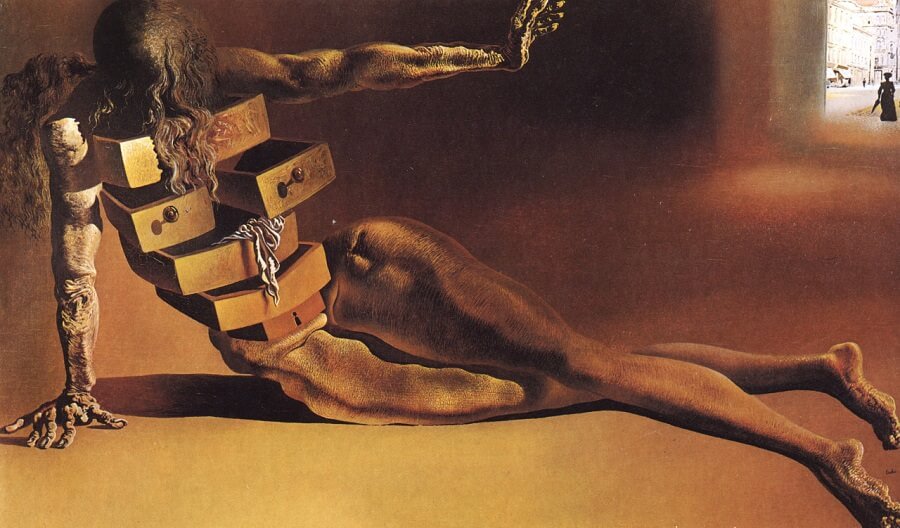The Anthropomorphic Cabinet, 1936 by Salvador Dali

In 1936, likely with the technical assistance of Marcel Duchamp, Salvador Dali modified a plaster cast of the Venus de Milo, one of the most famous of ancient sculptures in the Louvre, by introducing a series of drawers with the knobs covered in ermine fur in his sculpture Venus de Milo with Drawers.
Dali was deeply influenced by the work of Sigmund Freud, contending "The only difference between immortal Greece and contemporary times is Sigmund Freud, who discovered that the human body, purely platonic in the Greek epoch, is nowadays full of secret drawers that only psychoanalysis is capable to open." The artist was especially interested in Freud's interpretation of William Jensen's Gradiva, a 1903 novel about an archaeologist's obsession with an ancient relief; this curiosity coincided with his first explorations on the theme of cabinets - works such as the intimately scaled Atmospheric Chair (1933), in which a small cabinet seems to give birth to a maelstrom of vaguely human body parts.
In The Anthropomorphic Cabinet (1936), Dali transformed the cabinet into a female figure, or, as he put it, an "anthropomorphic cabinet." The female figure here is more lifelike, and unlike the Venus statue, she is depicted reclining. Her head leans forward over the partially open drawers, and her hair falls forward so as entirely to obscure the face.























